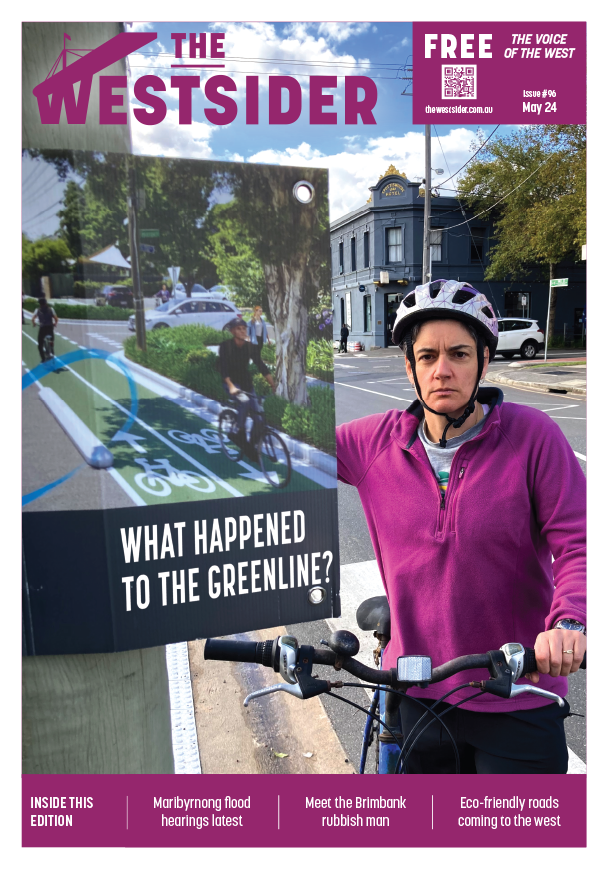By Mario Pinti
Something like a sliding doors moment is happening at the Altona foreshore.
The old pier we have always known is coming down while at the same time a new one is rising from the waters.
Since mid-year residents and visitors to Altona beach have been stopping to stare, photograph and no doubt reminisce over the old pier’s long life and their relationship with it. And, perhaps, imagine the new relationship to come.
Straddling three centuries, the pier is tightly bound to the growth and identity of the suburb whose name it bears.
But how did it come to be there?
The story of Altona Pier, one of the west’s great colonial landmarks, is very much linked to the fortunes of Marvellous Melbourne and the speculative land boom of the 1880s.
By that time the areas’ original inhabitants, the Yalukit-willam people, had been displaced and the grasslands around what we now call Altona divided into pastoral stations.
In 1887 the pastoralist Joseph Phelps sold around 2700 acres from his holdings, which included the original Homestead that still stands in Logan Reserve, to the Altona Bay Estate Company.
The syndicate behind the company talked a big game. Their road to riches was to be paved in the construction of a new bayside suburb to rival St Kilda and Brighton. That there was nothing down there by way of sealed roads, piped water, power or even a fledgling community mattered not. The attitude seemed to be: subdivide and they will come.
And so, they did.
 The first challenge was to find ways to get Melbournians down there.
The first challenge was to find ways to get Melbournians down there.
To do this the syndicate paid to have the line that ran to Williamstown Racecourse station extended through to where the current Altona station sits.
At the same time, undoubtedly the star attraction, was the building of an almost 400-metre-long pier to receive steam ships. It was largely completed in 1888 and ready enough for the land auctions that took place in September and October of that year.
What an experience it must have been sailing out from Queen’s Bridge or Port Melbourne to suddenly come upon this imposing structure as you rounded the rocky point at Seaholme.
Accounts from the time claim many thousands took advantage of the free travel and refreshments. All up, around 1000 lots were sold in a place where almost nothing stood.
Sadly, this promising start was cruelled by the property crash and subsequent economic depression that hit Melbourne in the early 1890s.
The boats stopped coming and the trains were cancelled.
And this is how it largely remained for several decades. By 1915, says Graeme Reilly of the Altona Laverton Historical Society, Altona’s population was around 50 persons and 15 dwellings. But it was becoming a popular holiday destination.
‘There was a large tent city down by the water and the pier,’ Graeme says.
Bronwen Gray, who co-authored the book Pier Street Pearls, says: ‘The pier was the jewel in the crown as Altona grew with its beach shacks and two room buildings.’
In the 1910s a second attempt was made to stimulate land sales. Altona was sold as a ‘progressive sea-side suburb’ with the pier featuring prominently in advertising.
Again, some success was achieved, this time with a small but active community to give it momentum. In the 1910s and 1920s the Altona Progress Association made efforts to beautify the area around the pier and to add public amenities. Sporting associations such as the Altona Life Saving Club were formed and ran events from and around the pier.
Local businesses emerged to cater for the needs of campers and picnickers drawn to the pier and the beach.
But those successes, lifting the population to 1722 persons and 403 dwellings by 1933, saw Altona’s momentum stymied once again by another economic depression.
Which then brought the matter of the pier’s ownership and maintenance to a head.
‘Interesting thing about the pier is its contested ownership,’ says Bronwen. ‘It was privately built, but when it fell into disrepair no one wanted it.’
Graeme agrees that responsibility for the pier was always problematic. But the community knew how important it was to the town, to its economic prospects. And he says it was this sense of ‘community ownership’ that ensured that at least the bare minimum would be done to keep it safe and standing when it was at its most dangerous and dilapidated.
 He says the community raised funds for repairs and kept pushing council and government to match their efforts until finally the old Board of Works took control in the 1940s.
He says the community raised funds for repairs and kept pushing council and government to match their efforts until finally the old Board of Works took control in the 1940s.
Through each iteration of the suburb of Altona, the grand old pier has been central.
Graeme Reilly is pleased that Parks Victoria, who are building the new pier, are reusing some of the old material to reference the original’s storied past.
Bronwen says that when plans for a new pier came out many people were very resistant to it.
‘They’d rather keep the old pier as it’s part of our history. People in their 90s have stories to tell about it, people in their 20s have stories to tell about it. But I think there’s a bit of excitement about it now.’
Perhaps it’s the excitement of knowing that the closing of one door and the opening of a new one will return us to a happily familiar place: a place to meet, chat and promenade with family and friends, to fish and swim, for some to scatter the ashes of loved ones. A vantage point to watch quietly the passing of the day.
To find out more visit: Local History – Altona Homestead – Home of the Altona Laverton Historical Society (alhs.com.au)
 Altona residents and professional artists Dr Bronwen Grey and Professor Alan Young, have just published a brilliant compendium of stories and images capturing the life and times of Pier Street, the spine of Altona that connects the pier and the council offices.
Altona residents and professional artists Dr Bronwen Grey and Professor Alan Young, have just published a brilliant compendium of stories and images capturing the life and times of Pier Street, the spine of Altona that connects the pier and the council offices.
‘The plan was to document how quickly the suburb has changed,’ says Bronwen. ‘And as part of that we thought of doing something around shared space, and that’s Pier Street. Everyone loves Pier Street!
The many stories recorded provide the long view of Pier Street, with the memories and family histories that go right back to the earliest days of the town.
‘Everyone’s got a story to tell about Pier Street. If you lived here, you shopped here; probably worked here at some time. You would travel down it to get to the pier or the council offices. We managed to find people who have that long connection, with a shop here or whose parents or grandparents had shops down here.’’
Pier Street Pearls can be purchased at: pierstreetpearls@gmail.com



